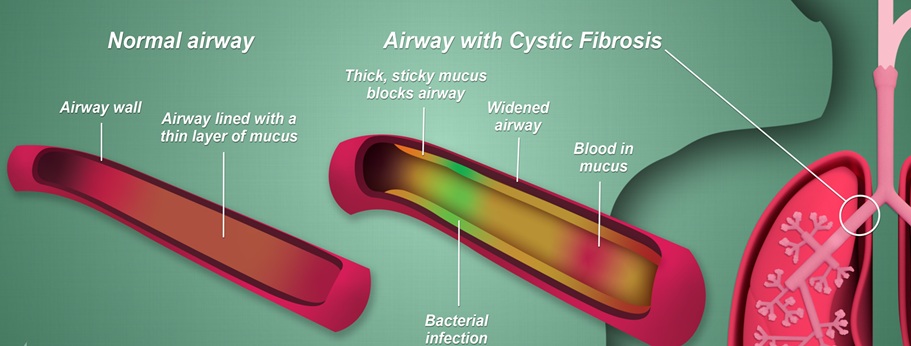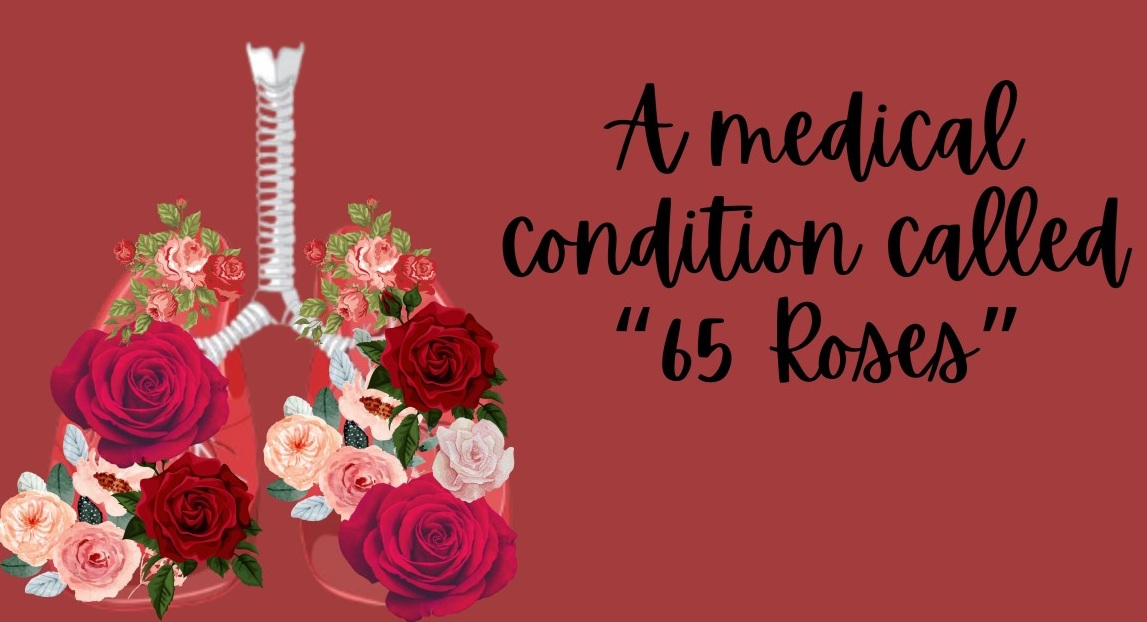Cystic Fibrosis (CF)“sixty-five roses” as a nickname
Cystic fibrosis (CF) is a genetic disorder that causes the body to produce thick, sticky mucus that can block and damage organs. It can affect the lungs, digestive tract, pancreas, sweat glands, and reproductive system. Some children with cystic fibrosis call it “sixty-five roses” as a nickname.
The origin of the term “65 Roses” can be traced back to the mid-20th century when a young boy named Richard Weiss, who had cystic fibrosis, overheard his mother making calls to various donors. Due to the nature of his condition, Richard struggled to pronounce “cystic fibrosis,” and instead, he pronounced it as “65 Roses.” This mispronunciation touched the hearts of those around him, and the term became an endearing symbol for the challenging and breath-taking reality of living with CF.
Cystic Fibrosis (CF) is inherited in an autosomal recessive manner, meaning a person must inherit two defective genes, one from each parent. Many people carry a CF gene but don’t have symptoms. In the United States, most children with CF are diagnosed by age 2, but some aren’t detected until age 18 or older.
There’s no cure for Cystic Fibrosis, but treatments can help manage symptoms and improve quality of life. Close monitoring and early intervention can help slow the progression of CF and lead to a longer life.
Autosomal recessive, defective gene on chromosome – 7
CFTR(Cystic Fibrosis Transmembrane conductance Regulator), a chloride channel activator in deficient.
A multisystem disease involving lungs, pancreas, sweat glands, GI tract and urogenital tract due to viscid secretion.
Features of Cystic Fibrosis
Pulmonary : Bronchiectasis, atelectasis, lung abscess, sinusitis, pneumothorax.

Intestinal : Meconium ileus, intussusception, volvulus
Pancreas : Reduced exocrine secretion, steatorrhea, diabetes, recurrent pancreatitis
Hepatobiliary : Cirrhosis, cholelithiasis
Urogenital : Decreased fertility due to defect in sperm transport.
Symptoms of Cystic Fibrosis
Wheezing, shortness of breath, coughing, sinus infections, gastrointestinal issues, salty skin and sweat, night sweats, fever, joint and muscle pain, low body weight
Clinical presentation of Cystic Fibrosis
Respiratory 40%
Bronchiolitis,
Bronchitis,
Bronchiectasis,
Pneumonia,
Sinusitis.
Non – respiratory
Malabsorption 30%
Meconium ileus 20%
Miscellaneous 10%
Cirrhosis, infertility, nasal polyps, pancreatic insufficiency
Diagnosis of Cystic Fibrosis
Sweat test – Sodium or chloride levels in sweat > 65mEq/ liter.
Guthrie test – Immunoreactive trypsin levels increased 2-3 times.
1. Necrotizing infection
Pyogenic bacteria:- Staph aureus, klebsiella (Friedlander’s), streptococcus, anaerobic organism, nocardia.
Mycobacteria (Tuberculosis, M kansasii, M.avium inlracelhdaris.
Fungi (Aspergillus, Histoplasma, Coccidioidomycosis)
Parasitic (Lung flukes, amoebas)
2. Cavitary infarction
Embolism (Bland, septic).
Vasculitis {Wegener’s granulomatosis, polyarteritis nodosa).
3. Cavitary malignancy.
Primary bronchogenic carcinoma.
Metastatic malignancies
4. Others
Infected cysts, silicosis, coalminer’s pneumoconiosis.
Pilocarpine iontophoresis: Sweat chloride > 70m Eq/L is diagnostic (normal – < 50 mEq/L
Evidence of bronchiectasis, hyper inflation, fibrosis in chest X-ray.
Constitutional symptoms
Foul smelling purulent sputum
X-ray shows thick walled cavity with surrounding consolidation and air fluid level in cavity.
Dull percussion note with cavernous breathing.
Complications of Cystic Fibrosis
Lung infections, digestion problems, diabetes, infertility, pregnancy complications
Growth retardation, propensity to heat stroke
Recurrent respirator}7 infection (pseudomonas)
Pneumothorax, massive hemoptysis, respiratory failure
Treatment of Cystic Fibrosis
1.Penicillin G 4-6 mega units/day but 20% anaerobes are resistant as they produce beta-lactamase.
Amoxycillin + clavulanic acid
Alternatively Clindamycin
Metronidazole
Duration of treatment 4-10 weeks or till x-ray clearance.
2.Postural drainage and chest physiotherapy.
3.Bronchoscopy: If, failure of antibiotics, evidence of obstructing tumor, foreign body, poorly communicating cavity,
4.Resection: Indications are. Massive hemoptysis, Malignancy, Associated symptomatic bronchiectasis.
Anti pseudomonas antibiotic for respiratory infection
Human recombinant DNAs to liquefy sputum and improve airflow
Uridine triphosphate – a chloride channel activator
Amiloride inhaler – a sodium channel blocker
Chest physiotherapy
Pancreatic enzyme supplement,
Medium chain triglycerides.
Lung transplant if disease too advanced.
CF gene therapy is a distinct possibility.
Homoeopathy and other traditional system of medicines also give good results to maintain the airway and associated symptomatic improvements.
medlight2u.com
- Sleeplessness (insomnia)
- Furuncle Nostril
- Presbyopia meaning “old eye”
- Oral cancer
- Gestational Trophoblastic Neoplasia (GTN)
Acne Acne vulgaris Acute Renal Failure Adrenal cortex Angina Angina Pectoris Aortic Regurgitation (AR) Aortic Stenosis (AS) Chest pain Chronic pyelonephritis Coarctation of Aorta Cough cyanosis Cystic acne Dehydration depression Diabetes Mellitus Diagnosis of Aortic Stenosis Dr.KTS DR K TAMILSELVAN Fatigue Heart Failure Hypertension Hypokalemia Hypothyroidism Ischemic Heart Disease LBBB Mitral Incompetence Mitral insufficiency Mitral valve prolapse Nocturia Patent Ductus Arteriosus PDA Polyuria Proteinuria pulmonary hypertension Pulmonary Stenosis ST Depression Symptoms of Acne Syncope Treatment for acne valvular heart disease Ventricular Septal Defect VSD Zits



Leave a Reply